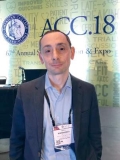FROM THE BRITISH JOURNAL OF DERMATOLOGY
An experimental biological agent, GP2015, demonstrated equivalent efficacy and comparable safety to etanercept for moderate to severe plaque psoriasis in a manufacturer-sponsored study, according to a report published online in the British Journal of Dermatology.
These findings should contribute to the confirmation of GP2015 as an etanercept (Enbrel) biosimilar for this patient population. Proposed biosimilars such as GP2015 are follow-on versions of authorized biological products, and regulatory authorities require that they demonstrate similarity with a large body of physiochemical and clinical data before they can be confirmed as biosimilars, said Christopher Griffiths, MD , of the Dermatology Centre, Salford Royal Hospital, University of Manchester (England), and his associates.
To contribute such data, Dr. Griffiths and his associates studied the efficacy and safety of GP2015 compared with etanercept, a tumor necrosis factor blocker, in the 2-year EGALITY trial . They assessed 531 adults at 74 medical centers in 11 European countries and South Africa, all of whom had active but stable chronic plaque psoriasis affecting 10% or more of their body surface area and Psoriasis Area and Severity Index (PASI) scores of 10 or more.
The study participants were randomly assigned in approximately equal numbers in a double-blind fashion to self administer GP2015 or etanercept subcutaneously, twice weekly for 12 weeks. Those who achieved at least a 50% improvement in PASI score were then randomized to continue the same treatment once weekly or to undergo a series of three treatment “switches” between GP2015 and etanercept at 6-week intervals until week 30. During an extension phase of the study, participants could then continue to receive the same treatment they had ended on, until week 52.
The primary efficacy endpoint – the percentage of patients who showed at least a 75% improvement from baseline in PASI score (PASI 75) at 12 weeks – was 73.4% with GP2015 and 75.7% with etanercept, which demonstrated therapeutic equivalence. A secondary efficacy end point – mean change in PASI score from baseline to week 12 – also was similar between the two study drugs. In all treatment groups, both PASI mean scores and change in PASI scores over time were comparable between the two study groups, regardless of switching between the two agents. In addition, in all groups, PASI 75 and PASI 90 scores increased gradually over time until week 30, and then remained stable through week 52, the investigators said ( Br J Dermatol. 2016. doi: 10.1111/bjd.15152 ).
The proportion of patients with at least one treatment-emergent adverse event was similar in the GP2015 and etanercept groups who did not switch agents (59.8% and 57.3%, respectively), and was also similar among those who did switch agents between GP2015 (61%) and etanercept (59.4%).
The rates of serious adverse events and of adverse events that led to withdrawal from the study were similar across all treatment groups. Immunogenicity of GP2015 was similar to etanercept.
However, the rate of “adverse events of special interest” – those referred to in special warnings and precautions on the etanercept label – was markedly higher for continued GP2015 than for continued etanercept (11.0% vs. 4.7%) and for switched GP2015 than for switched etanercept (11.0% vs. 5.2%). One patient who took etanercept throughout the trial developed malignant melanoma.
The results of the study “confirm biosimilarity that was established with all previous analytical comparisons to the reference product in that equivalent efficacy was demonstrated as well as similar safety and immunogenicity of GP2015” with etanercept, “in a highly sensitive, generally immune-competent population,” the authors concluded.
The study was funded by Hexal AG, a Sandoz company, which was involved in the study design, data collection and analysis, and manuscript preparation. Dr. Griffiths reported ties to AbbVie, BMS. Galderma, Janssen, Leo-Pharma, Lilly, MSD, Novartis, Pfizer, Regeneron, Roche, Sandoz, and UCB Pharma, and his associates reported ties to numerous industry sources.





